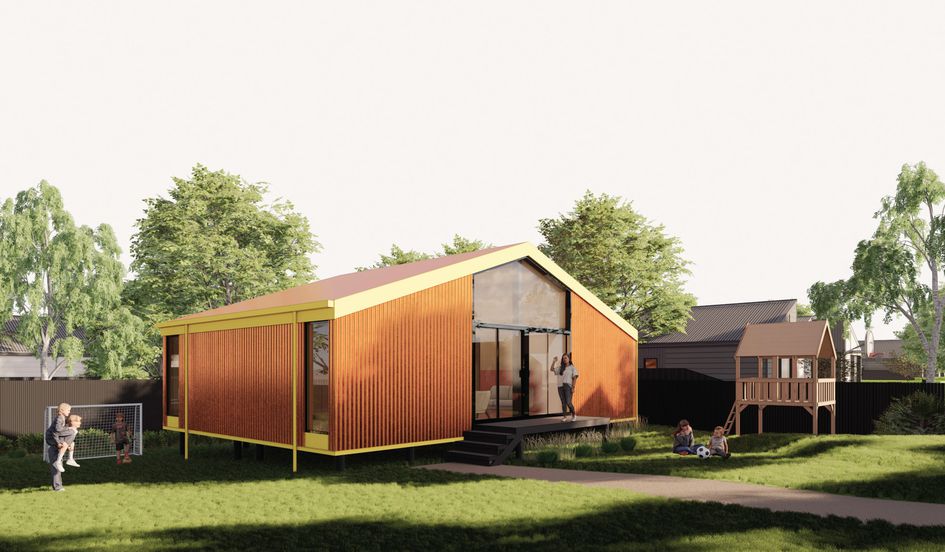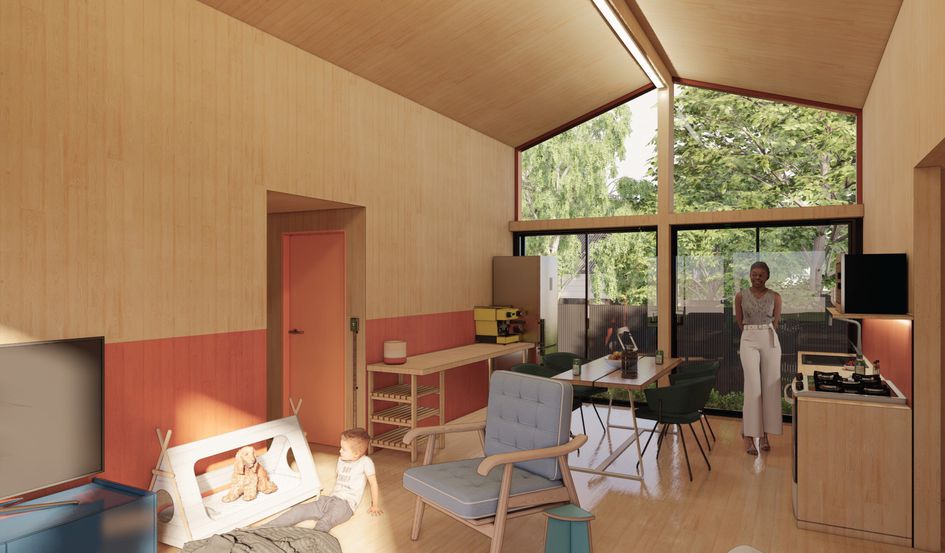Crafting affordable housing is one of the closest challenges of our time. According to Habitat for Humanity, some 300,000 families in Aotearoa are living in less-than-adequate conditions. Around 4000 children wake up in morning in a motel room, 27,000 are on the waiting list for Government housing and first home buyers – well they’ve almost given up hope.
The Design Group, which was set up within RTA Studio to encourage staff to explore and progress their design ability through research and entering competitions, looked to the configuration of the whare and fale, and the vernacular of rural sheds, for inspiration to develop a dwelling that was culturally appropriate for Māori, Polynesian and Pākehā clients.
The fully costed 85-square-metre concept involves a flat-pack model with a simplified material palette. Using fewer components and a modular system slashes the labour cost dramatically. A typical New Zealand house of this size would cost in the region of $220,000 for the labour. The Living House is just $30,000.
A stripped-back design does mean that, for instance, the bedrooms only come equipped with a hanging rail for clothes rather than a wardrobe and that ambient and task lighting has industrial-style exposed conduit. It does not mean, however, that there aren’t moments of architectural joy. A 4m-wide living room with 4m-high ceilings brings an incredible sense of volume to the houses; ranch sliders and clerestories let in ample natural light – and the timber walls give a feeling of warmth and nurture.
Four colours for the cladding - bush green, wharenui red, sunrise orange and sea blue – mean the homes can be personalised whether they are presented individually, teamed with an existing house to infill the backyard, or grouped together in a like-minded co-housing arrangement.
These neat little built objects are cheap and cheerful – in the nicest possible way.
For more detailed information and sales enquiries, visit
livinghouse.nz

